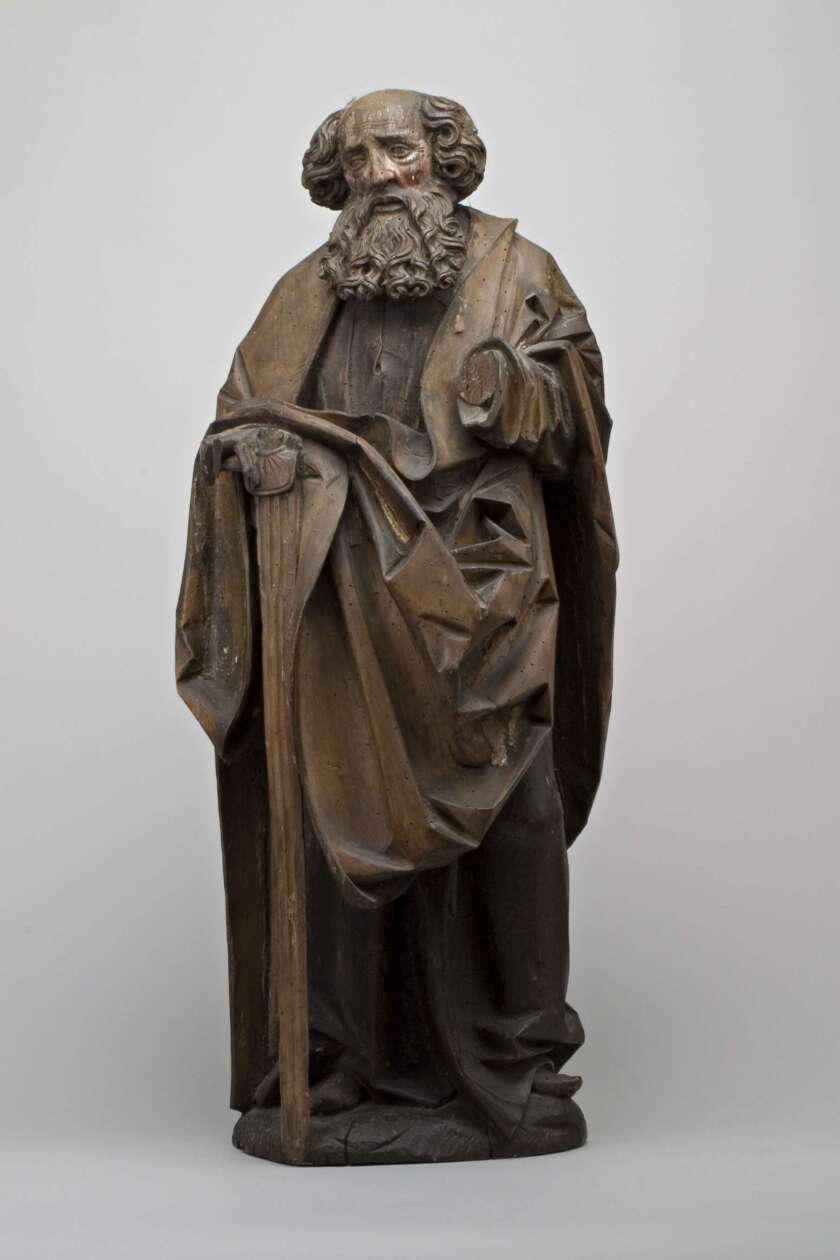The German aesthetic bears the imprint of a rich tradition that goes back to medieval times. German artists engaged in a variety of media, including sculpture, painting, and printmaking. What stylistic similarities can you observe among Albrecht Dürer’s Title Page: The Mocking of Christ, Viet Stoss’ Saint Paul, Max Thalmann’s Last Supper, and Lucas Cranach’s Fall and Redemption of Man?
Albrecht Dürer (1471–1528) Title Page: The Mocking of Christ (Large Passion)
Purchase/gift from Mahonri M. Young Estate

Workshop of Viet Stoss (1450–1533) Saint Paul
Purchase/gift of Gloria Teichert with funds provided by Jack R. and Mary Lois Wheatley

School of Lucas Cranach (1472–1553) – Fall and Redemption of Man
Gift of Karel Waterman

YOU MAY NOTICE
Both the Dürer and Thalmann works are woodcuts. With the evolution of the printing press, prints were cheaply produced and mass distributed. Dürer was long known as a master of the woodcut medium, and Thalmann’s 20th- century embrace of traditional German methods of art production was therefore no coincidence.
Thalmann’s use of woodcut not only references a long history of printmaking, but also a long tradition of working with natural materials such as wood. Wooden figures like Viet Stoss’ Saint Paul filled altarpieces in Germany during the medieval period.
The thick folds in the drapery of Viet Stoss’ Saint Paul and School of Lucas Cranach’s Fall and Redemption of Man may both have been influenced by the prevalence of textile production in many northern European countries.
